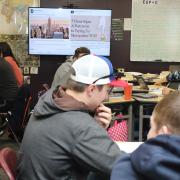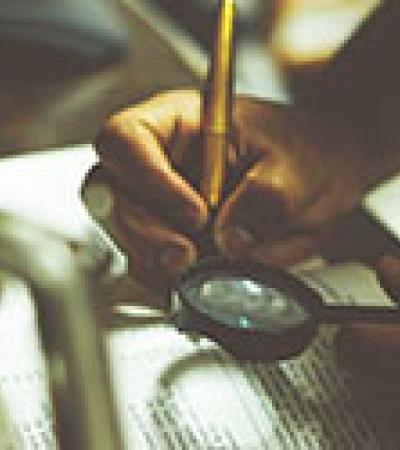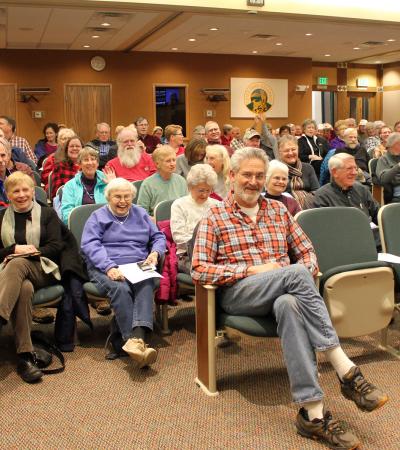How to Spot Fake News helps high school students develop critical judgment skills to assess news sources.
Using national and local news articles and videos, critical discussion and games, students learn how to identify fake news.
Advanced Planning
How to Spot Fake News is a class I developed after participating in ALA's Media Literacy @ Your Library project in 2017-2018. I adapted the lesson plan presented by Michael Spikes from the Center for News Literacy at Stony Brook University to include examples of news from my community and region.
I used news videos and articles to engage students in the lesson. To explore bias, we watched Eli Pariser's TED talk, "Beware Online 'Filter Bubbles,'" and examined the Media Bias Chart. We discussed the danger of filter bubbles on Google searches and Facebook feeds and the importance of seeking balanced, high-quality information.
To practice deconstructing new sources, students compared two videos of Denver International Airport conspiracies from different sources (one from BuzzFeed News and one from Channel 9 News) and assessed the quality of the evidence and sources presented in each video. Students also participated in an interactive game, Factitious, to test their ability to spot fake news.
You can download my PowerPoint to see all of the resources used, as well as to view my slides and lesson notes.
Marketing
I taught this class as outreach to two English classes and a journalism class at Estes Park High School. I found the outreach opportunity by talking to the school librarian, who directed me to the English teacher.
Budgeting
The only cost for this program is staff time for one librarian.
You will need technology equipment to project the video and audio from the slides. In the version of the lesson plan that I taught, students also needed access to mobile devices or laptops. Students used them to participate in an online poll using Slido to provide their opinion on the introductory question, "What concerns you about fake news?" and to play Factitious, an online game that asks players to determine if presented news stories are real or fake.
In our school district, all high school students are provided with an iPad, so students used either their school-issued iPad or their own phone for the interactive portions of the program. If students do not have access to devices, these elements could be skipped.
Day-of-event Activity
I spent about one hour of off-desk time before the program to review the lesson plan and test that each video was still available. At the school I set up the slide projection.
Program Execution
Twelve students attended the first class, 26 attended the second, and 21 attended the third. Each class was 90 minutes.
The student feedback to the program was positive and demonstrated the impact of the lesson. Some quotes from students include:
- “Social media spreads a lot of hate, but it also gives you the ability to speak your words and express who you are. I’m torn about [its value].”
- “Even in historic Estes Park people used fake news for their benefit.” (in response to learning about a 1917 publicity hoax by the Denver Post and Rocky Mountain National Park)
- “I learned how much fake news there is and how easy it is to be confused. People don’t realize how much of what they’re reading could be fake.”
- “It’s not even a real magazine!”
Students also created a fake Tweet during class to show their classmates how easy it was to spread fake news.
Advice
It is important to acknowledge that this is a politically charged topic and that the library’s goal is to offer an opportunity for education and civil dialogue. While everyone in the classroom may not share the same opinions, we can all agree to be respectful of different viewpoints.
I also recommend that you supplement stories of national importance with local examples to help students recognize the prevalence of this issue.
In terms of adapting the lesson for adults, I've taught the same lesson plan and slides to adult learners at a How to Spot Fake News class at the public library. The content adapted well to adult learners; however, attendance was poor. Many adults believe that they are too savvy to be fooled by fake news. I think weaving in small amounts of this content into other library programs, such as tech literacy, job seeking, election fever, adulting 101 and emergency preparedness, might be a more effective way to provide media literacy education to adults.
Supporting Materials
- Feedback (Coming Soon!)
- Programming Librarian Facebook Group






